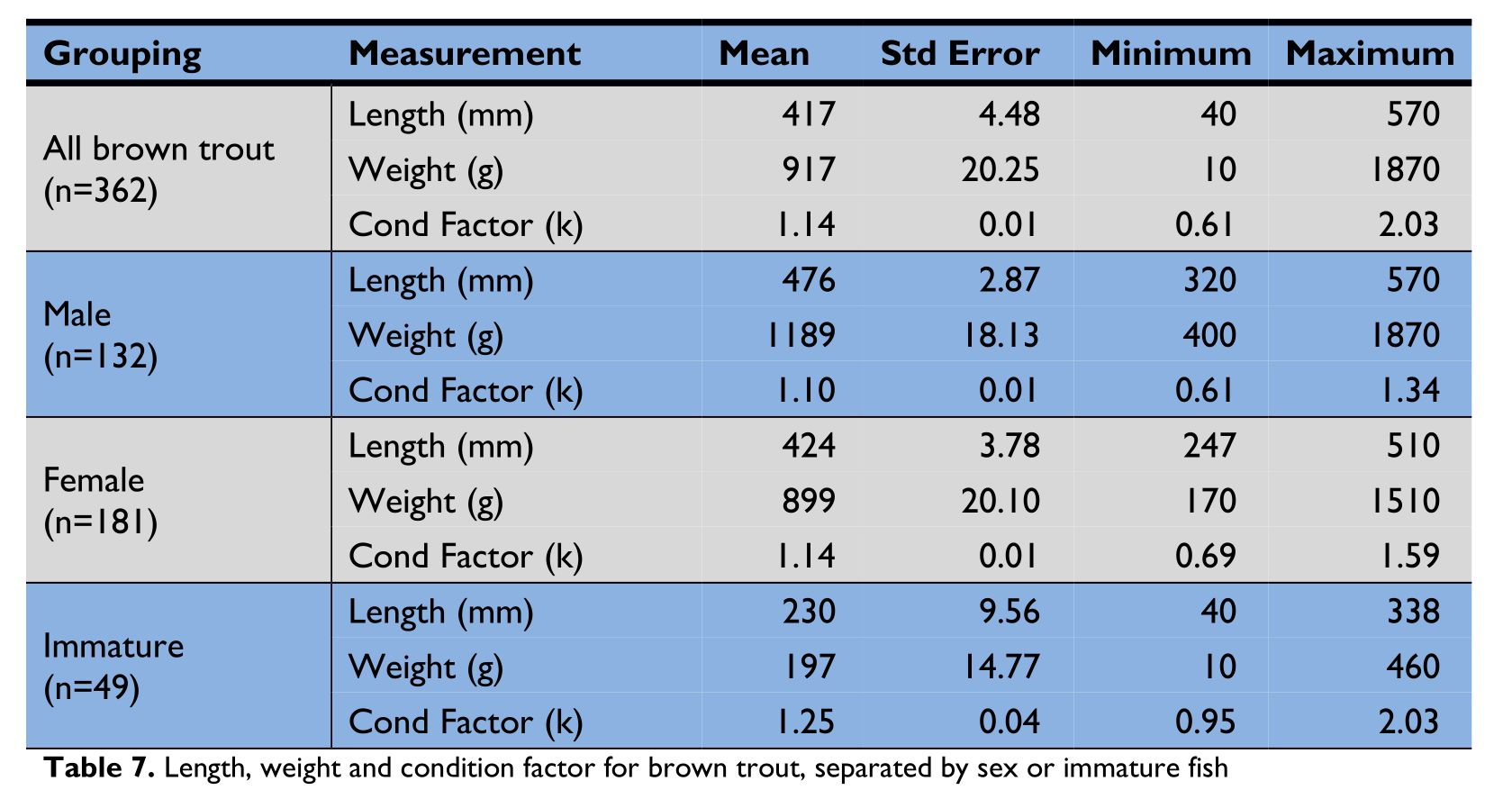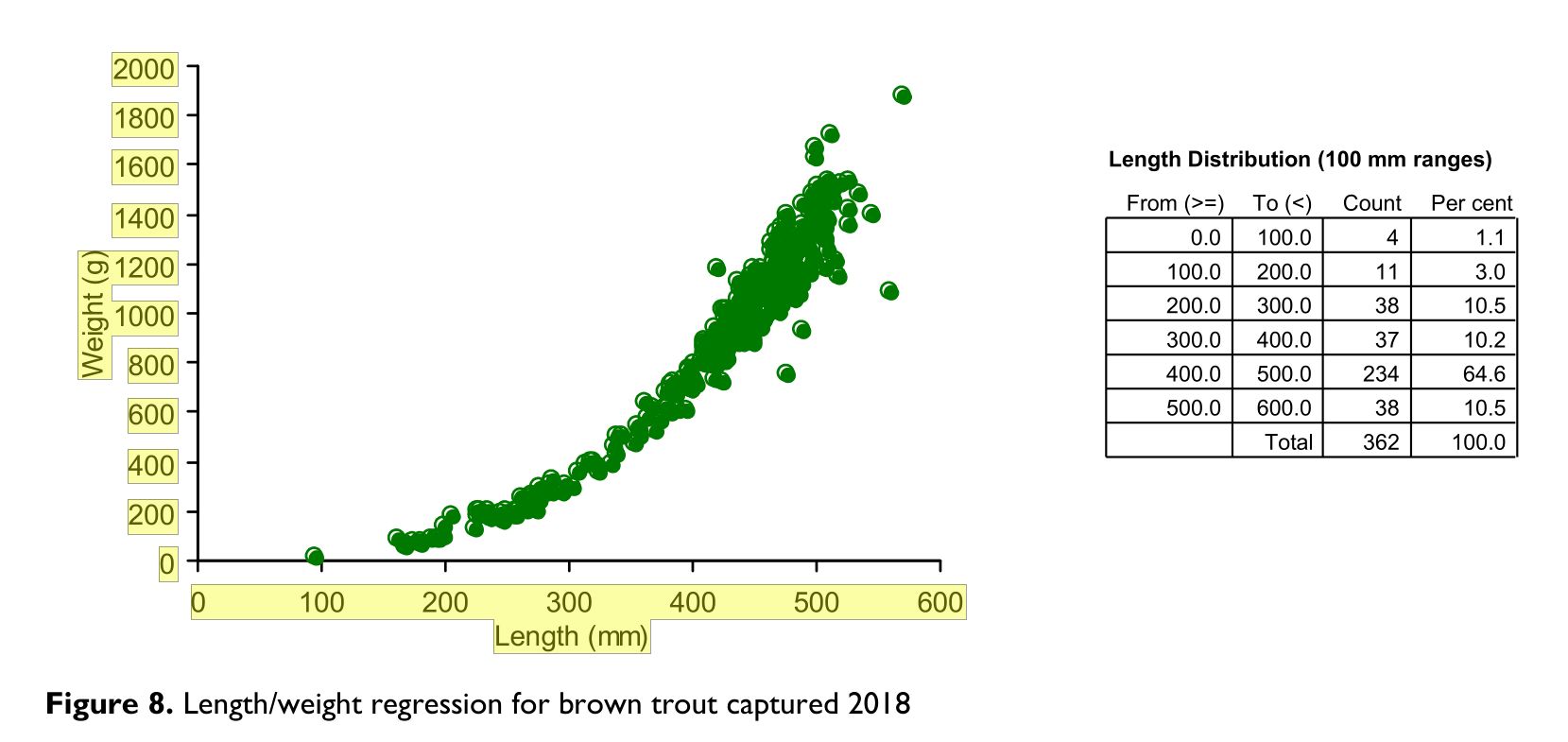During 17-19 April 2018, we conducted an in-lake survey at Little Pine Lagoon to assess:
- the CPUE for brown trout,
- the population structure, and
- the condition of fish.
Over two nights, we set 104 box traps and captured 482 brown trout, with all areas of the lagoon surveyed. We weighed and measured 362 brown trout for fork length, with the remaining 120 brown trout counted only. The CPUE for brown trout was 4.64 fish per trap, indicative of a high abundance of fish.
Of the 482 brown trout captured, 50 per cent were female, 36 per cent male, and the remainder immature fish. Table 7 shows the summary statistics for these fish. The average weight for all fish, including immature fish, was 917 grams. The average weight for fish over 300 mm was 1 044 grams, with 85 per cent of the fish measured being greater than 300 mm length (see Figure 8).
Click on the image for a larger view - opens in a new window.
The growth of fish was good, with all fish displaying a healthy weight for a given length. Just over ten per cent of fish grew to over 500 mm (see Figure 8), with no signs of larger fish being in poor condition.
Click on the image for a larger view - opens in a new window.
Click on the image for a larger view - opens in a new window.
Discussion
There was good evidence the recruitment of brown trout has been consistent across several years with all length classes present (see Figure 9). However, recruitment resulting from 2016 spawning was not well represented, despite favourable conditions during winter/spring.
There were still reasonable numbers of fish surveyed in the 220-320 mm size range. The overall condition of brown trout was good, with 92 per cent in the fair to excellent range. There was no evidence of excessive harvest, with significant latent fishing effort apparent over the last six years.
In summary, Little Pine Lagoon has a high abundance of brown trout across a wide range of sizes. The vast majority of fish are in good condition and the growth of fish, relative to most other waters, is good. The annual harvest relative to fish abundance is sustainable and present fishery management actions are supporting the fishery.



